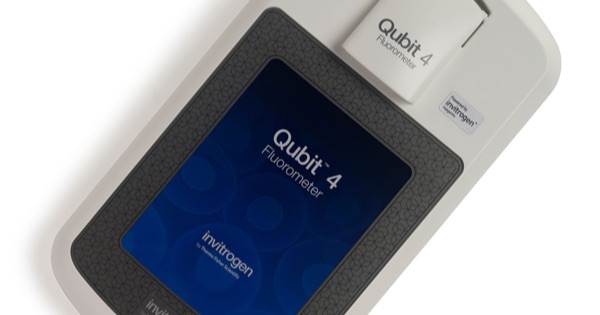or start from open source methods. Learn more about OneLab softwareUse OneLab
Qubit™ Fluorometric Quantitation

This example method provides a freely adjustable framework for measuring the adaptability of the OneLab environment to workflows from different application fields. It helps to understand various nuances of the code-free, universal protocol designer and provides general indications as to the feasibility of a project. Scripts generally require fine adjustment to correct for variables and support specific labware implementation.
Overview
In contrast to UV/visible absorbance, fluorescence detection using the Qubit fluorometer enables specific, sensitive measurement of nucleic acid quantity and quality. It is an easy-to-apply, mix-and-read method (Figure 1) that uses small sample volumes in the microliter range (1-20 μl), which is particularly useful in cases where only small amounts of material are available. Moreover, it is an ideal technique to quantify diluted, precious samples that are used in demanding applications, such as NGS, genotyping, RNA analysis and quantitative RT-PCR. Dyes bind selectively to the biomolecules of interest and the intensity of emitted fluorescence directly reflects the amount of DNA or RNA molecules in the sample.

Figure 1: Qubit standard/sample preparation workflow. Image extracted from Quick Reference Qubit Assays PDF file (Pub. No. MAN0017210), Thermo Fisher.
View the demonstration video to learn more about the Qubit fluorometer capabilities and how to accurately measure dsDNA concentration.
Learn more about Qubit Fluorometric Quantification from Thermo Fisher
Protocols

Contact info

 This is an open access protocol distributed under the terms of the Creative Commons Attribution License, which permits unrestricted use, distribution, and reproduction in any medium, provided the original author and source are credited.
This is an open access protocol distributed under the terms of the Creative Commons Attribution License, which permits unrestricted use, distribution, and reproduction in any medium, provided the original author and source are credited. 